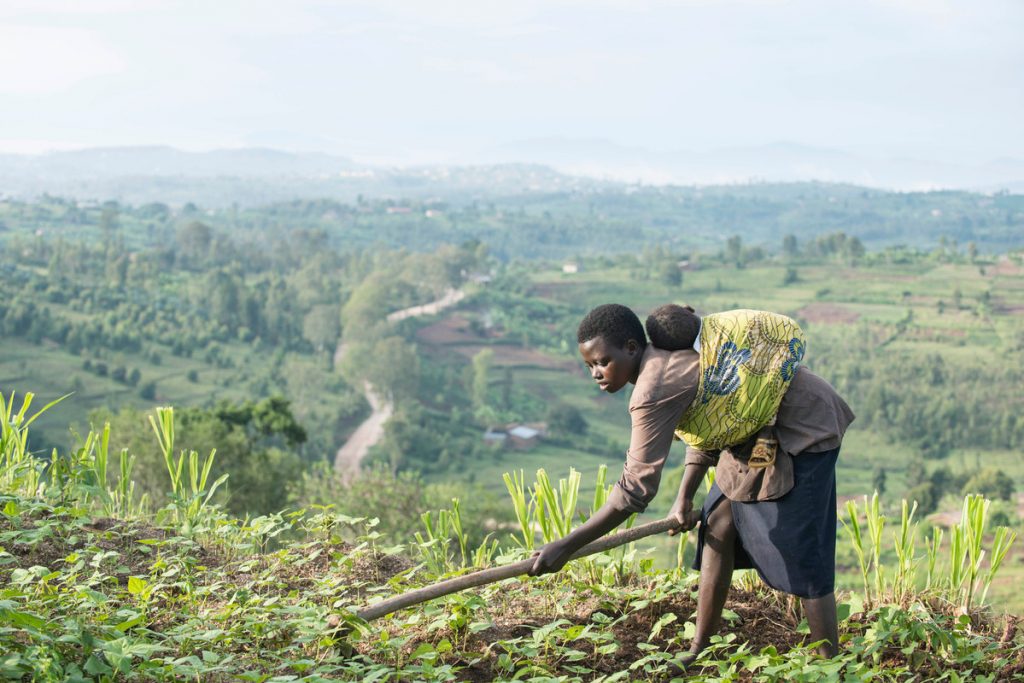I couldn’t help but feel like an interloper, as I swiped my badge to get into the grandiose glass headquarters of the World Bank. It wasn’t that long ago that I was banned from this institution as a result of my role in social movements that challenged this wealthy institution to live up to its “dream of a world without poverty” and cancel the debts of developing countries.
Even though debt cancellation was realized by many countries – and the World Bank is a different institution today than it was a decade ago – it’s still hard for me to come to talk about poverty, hunger, food security and the value of investing the great wealth of nations and multi-lateral banks in women smallholder farmers in such a glamorous setting.
Swallowing my discomfort, I took my seat at the table with donor nations and the other public and private stakeholders of the Global Agriculture and Food Security Program (GAFSP).
This global fund for agriculture manages a billion-dollar portfolio that is invested in low-income country agriculture plans. It is an innovative fund for many reasons – one of the main ones being that it includes civil society.
I sat at that table to represent civil society from the North. Next to me were two representatives of farmer’s organizations from the South. The Network of Farmers’ and Agricultural Producers’ Organizations of West Africa (ROPPA) and the Asian Farmers’ Association (AFA) are my partners in crime as we try to move this mechanism from the global level to increase invest in women smallholder farmers.
At the same time, ActionAid, ROPPA, AFA and others are working within countries to influence the plans and proposals that come to this fund to ensure that the resources meet the needs of the farmers. The hope is that this pincer approach can begin to transform public investment in agriculture to put the hard working women and men that feed the world at the very center.
If you want change in your life, walk into it!
In old spirituals, African Americans in this country would sing about how:
When there is a promise of a storm, if you want change in your life, walk into it. If you get to the other side you will be different. So wade in the water, it will really be troubled water.
And so I wade into the negotiations holding hands with my civil society allies, hoping that by going through this process we will realize change in the lives of farmers around the world.
What I found in this round of negotiations gave me hope and pause at the same time. The hope was found in the faces of the beneficiaries of this fund. By some miracle of technology Bangladeshi and Rwandan farmers were brought in by video in a live conversation, to tell us what was working in their farms. They spoke about how their production increased, how they saved their profits, reinvesting some into their farms, homes, schools and communities. How they could buy processing machines to add value to their products. One farmer invested in solar panels for his house!
Not only were their success stories inspiring, the fact that there can be a global multi-stakeholder agriculture fund whose leadership is informed by the smallholder farmers themselves also gives hope.
But later, we waded into the facts and figures of hunger and poverty in our world. When we look at the scores of billions of dollars needed each year to invest in food security and end hunger by 2030, it is daunting. When you look at a bar graph that shows where agriculture investment is coming from it is shocking!
I knew that smallholder farmers were the first and largest investors in their farms, but what I hadn’t realized is that over $160 billion is invested by smallholders in agriculture every year!
Governments only spend $40 billion a year, and all of the other categories – even global foreign aid – are all less than $5 billion a year! When we look at those statistics, this $1.5 billion fund seems so small. Small enough to give me pause. And yet, as the meeting progressed and we looked at the future of this fund it was clear to me that this small fund punches well beyond its weight because it:
- Brings smallholder farmers into the conversation and decisions are made by consensus about the fund, with major farmers organizations at the table;
- Focuses on country-driven plans (that smallholder farmers have influenced when they’re being developed);
- Is a flexible fund that is targeted to the countries with the greatest need, including countries with the most challenging environments;
- Is a fearless fund that takes risks to invest in new and innovative support for smallholder farmers;
- Catalyzes new and deeper investment from other sources, both public and private to scale up and make major changes.
So while I might pause as I adjust my mic at the big table of nations and banks and wish that I could be transported to a far more comfortable place – a sun soaked farm in Africa, Asia or Latin America, where movement building among farmers is happening – I have hope that with ROPPA and AFA we can help guide this fund to be a strong wind for women smallholder farmers who are making change happen for themselves and their communities.

